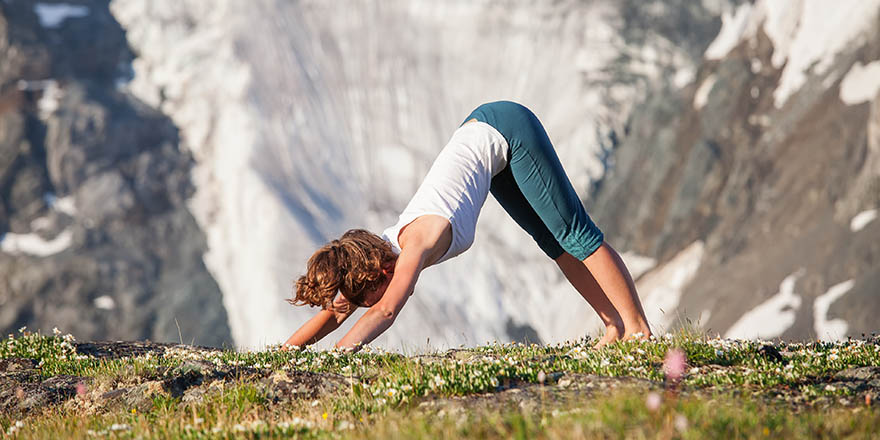Do You Down Dog?
By Jay Anderson
In the west this is probably one of the most commonly known yoga poses there is, incorporated in almost every yoga class, however I am often asked what are the benefits of this pose and am I even doing it correctly??
Adho Mukha Shavanasana, the Sanskrit term (a mouth full I know) or in English Downward Dog acquires this term because like all yoga poses it is derived from nature or an animal, in this case the “dog” in a downward stretch position. And feeling the stretch through your hamstrings and calves while holding this inverted v position can sometimes make you want to howl. Literally!
While initially this pose can feel like an intense stretch, over a short time and with regular practice within weeks you will start to find the Downward Dog restorative and enjoy holding the pose for anything from seconds to minutes – before you know it you will be loving this restorative position…
Why Down Dog??
Well the benefits are endless but here are the top 3 key advantages to practicing this pose daily…
1- Elongates the spine
The traction you get from planting your feet and then pushing your hands strongly into your mat is one of the best spinal elongation tools the yoga asana practice has to offer.
Using gravity as your friend, you will be reversing the usual downward pressure on the spine, helping to gently re-align the vertebra in a natural, easy way.
Downward Facing Dog offers all the benefits of an inversion on the spine, without having to fully go upside-down—which is great for anyone who has neck or shoulder injuries, or just doesn’t yet have the strength to safely hang out inverted.
2- Stretches the hamstrings and calves
In the west this is especially important as with the sedentary lifestyle majority of us lead, we are left with super tight hamstrings and calves, ladies wearing heels all day, every day at work I’m sure you can relate. Holding this position for as little as 30 seconds to 3 minutes and gradually allowing your heels to make their way to the ground will really help to lengthen those tight muscles.
3- Strengthens your arms
Finally, who can’t use a little arm-strengthening love? This pose is awesome for increasing your upper body strength in general, and your arm strength in particular—as long as you’re practicing the posture properly!
It’s easy to dump all your weight onto your shoulders and chest in this pose, which of course isn’t going to do much for your arms.
If you can bring your attention to really pressing your hands into your mat, and rolling your triceps out away from your ears, you will get awesome muscular engagement throughout your whole arm, which in turn will help build strength and stamina in all of your muscles.
While I wont go into the various ways you can get into your downward dog, I will highlight some tips for you so that next time you’re in this position keep a few of the following in mind…
1- Hands shoulder width apart and firmly press the palms of your hands into the mat, spreading all 10 fingers as wide as they can go, be mindful to press down at the root/base knuckle of your index finger, this will take some of the weight off your wrists.
2- Feet hip width apart and firmly spread all 10 toes along the mat, lifting the inner arches of your feet here, this will deepen the stretch along the backs of your legs.
3- Distribute your weight evenly between your hands and your feet, you will notice if you’re too far forward in your Down Dog there will be added pressure on your wrists, so push your bottom back a little.
4- Tail bone high to the ceiling, this is key- allow for a slight micro bend in your knees to bring that bottom up a little higher, and to prevent any rounding of the back. It is more important for your back to be straight than it is for your legs to be straight. The legs will straighten over time as the hamstrings lengthen. Be patient with your body!
5- Role the eyes of your elbows in and triceps out- this will help with shoulders away from ears, and shoulder stability.
With all of these tips in mind and now knowing the 3 major benefits of Downward Dog. You’ll feel the difference in your back firstly, followed by length in your hamstrings and calves in no time!
Happy Down Dogging!
Namaste
Jay
….most often, you likely see yogis doing downward dog during sun salutations, which is a short, energizing flow. But versions of the pose are also frequently used in all kinds of workouts, from Pilates to post-run stretching routines to injury-prevention plans. And that’s because health and fitness professionals from all fields know how rewarding downward dog can be for your wellbeing, too.
 Clinic Hours
Clinic Hours Email Us
Email Us


 Request Appointment
Request Appointment